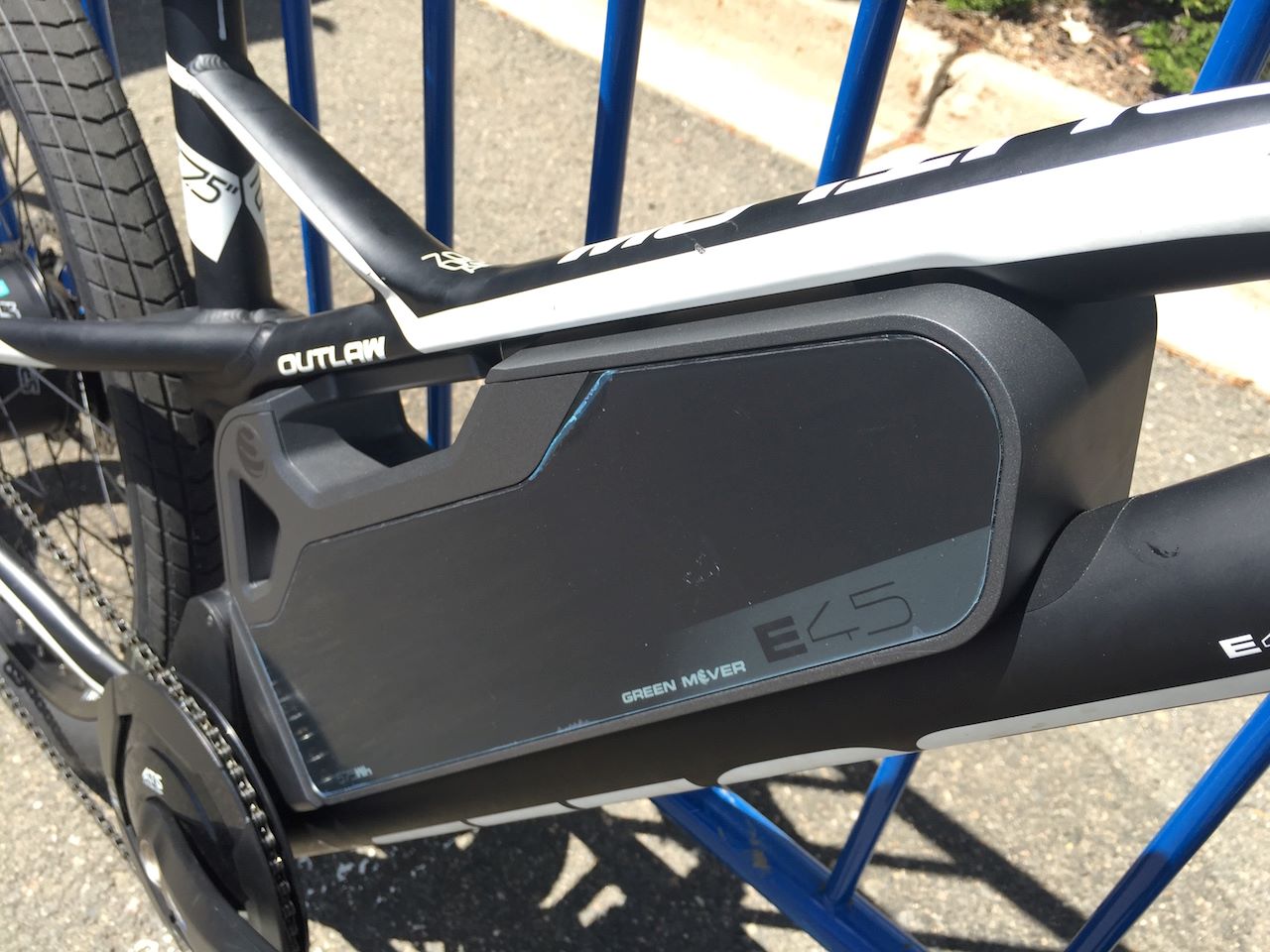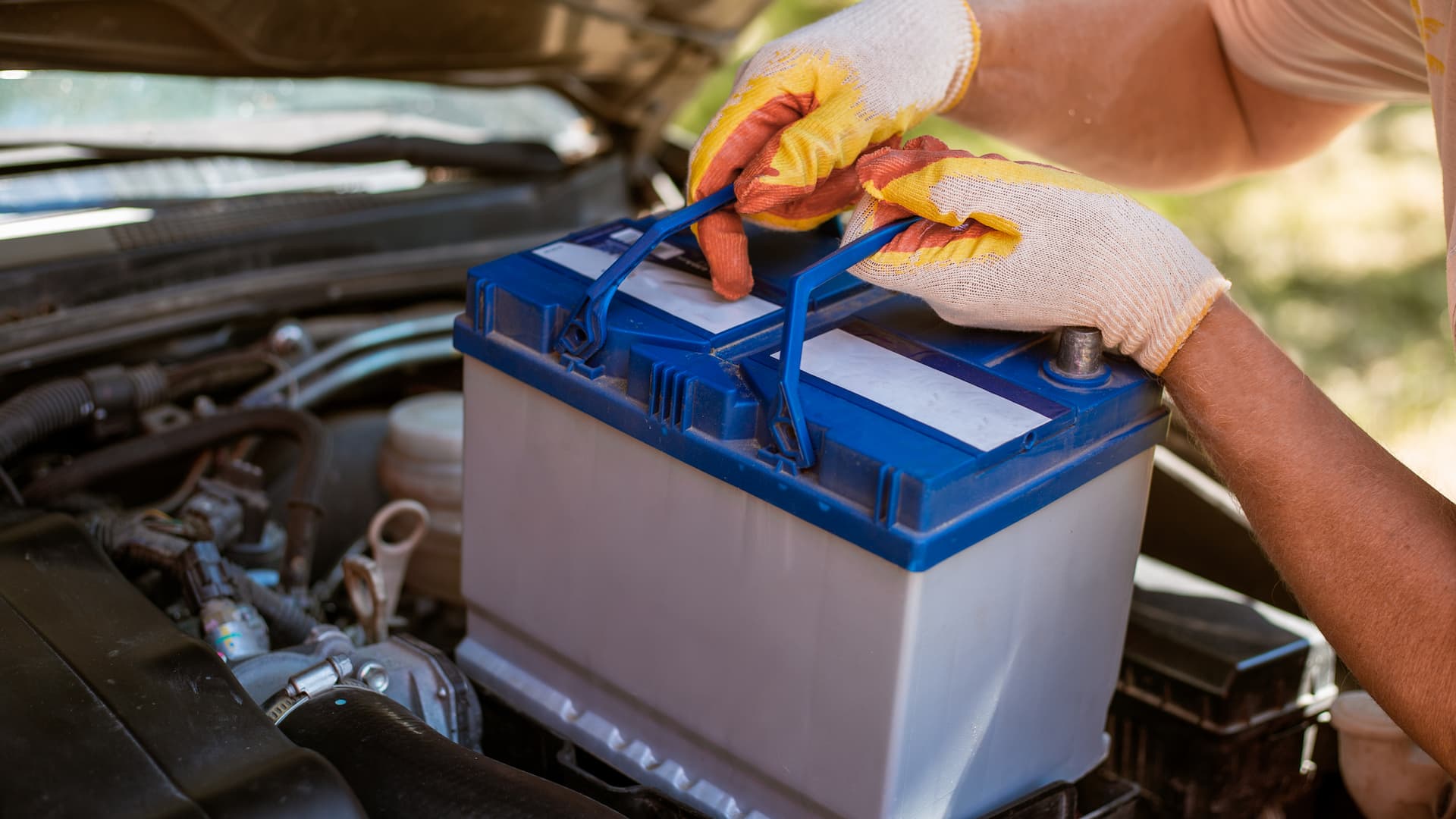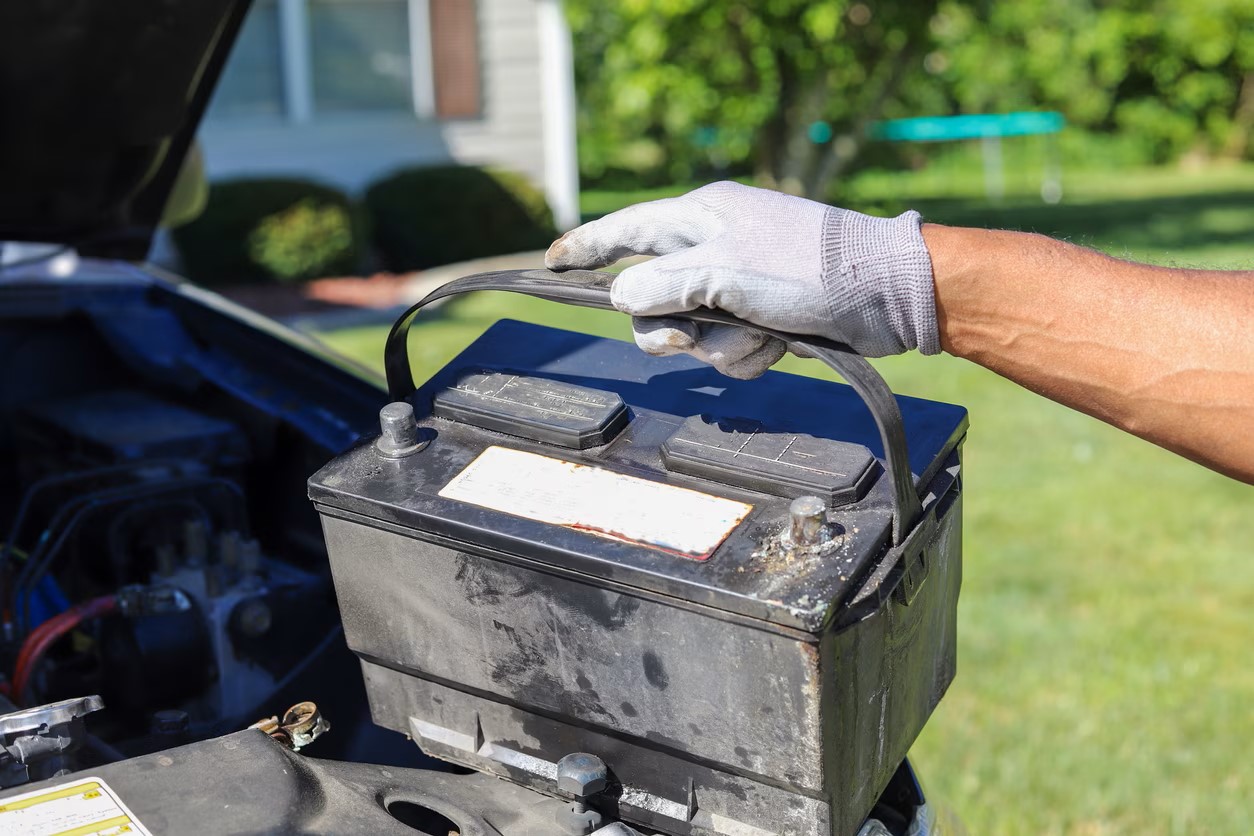

Articles
How To Store An eBike Battery
Modified: December 7, 2023
Learn effective ways to store your ebike battery in this helpful guide. Discover helpful articles and tips to extend battery life and maximize performance.
(Many of the links in this article redirect to a specific reviewed product. Your purchase of these products through affiliate links helps to generate commission for Storables.com, at no extra cost. Learn more)
Introduction
Electric bikes, or eBikes, have gained popularity in recent years as a greener and more convenient mode of transportation. One crucial component that powers these bikes is the battery. Just like any other rechargeable battery, it requires proper care and maintenance, especially when it comes to storage. Whether you’re going on a winter hiatus or need to store your eBike for an extended period, knowing how to store the eBike battery correctly is crucial for its longevity and performance.
In this article, we will guide you through the process of storing your eBike battery, step by step. We will cover everything from preparing the battery for storage to selecting the right storage location, ensuring that your battery remains in optimal condition throughout its period of inactivity. Let’s dive in and discover the best practices for storing your eBike battery.
Key Takeaways:
- Properly storing your eBike battery is crucial for its longevity and performance. Choose the right storage location, maintain the battery’s charge level, and periodically check its condition to ensure optimal performance when you’re ready to ride again.
- When storing your eBike battery, remember to prepare it properly, choose a safe storage environment, and periodically check its condition. Following these best practices will help prolong the lifespan of your eBike battery and ensure reliable power for future rides.
Read more: How To Store A Battery
Understanding the Battery
Before we delve into the storage process, it’s essential to understand the basics of an eBike battery. Most eBikes are equipped with Lithium-ion (Li-ion) batteries, known for their high energy density, lightweight design, and efficient performance. These batteries consist of individual battery cells, generally grouped together to form a pack. The voltage and capacity of the battery pack will vary depending on the eBike model.
One crucial aspect of eBike battery storage is to keep it away from extreme temperatures. Li-ion batteries are sensitive to both high and low temperatures. Excessive heat can cause the battery to degrade faster, while extreme cold temperatures can lead to reduced performance and potential damage. It’s important to choose a storage location that maintains a moderate and consistent temperature.
Another factor to consider is the battery’s state of charge before storing it. Li-ion batteries have a recommended storage voltage range, typically between 20% and 80% of their full capacity. Storing the battery within this range helps maintain its overall health and longevity. If the battery charge is too low or too high, it can lead to capacity degradation or potential safety risks.
Now that we have a basic understanding of eBike batteries, let’s move on to the next step: choosing the right storage location.
Choosing the Right Storage Location
The storage location you choose for your eBike battery is crucial in ensuring its safety and longevity. Here are some factors to consider when selecting the right storage location:
- Temperature Control: As mentioned earlier, extreme temperatures can adversely affect the battery. It’s important to choose a storage location that maintains a moderate temperature, preferably between 50°F and 77°F (10°C and 25°C). Avoid areas that are subject to direct sunlight or fluctuating temperatures, such as attics or garages without climate control.
- Air Circulation: Adequate air circulation is essential to prevent the battery from overheating during storage. Choose a location that allows for proper ventilation and prevents the buildup of heat.
- Dry Environment: Moisture can damage the battery and its components. Ensure that the storage location is dry and free from any potential water leaks or humidity.
- Secure and Stable: The storage location should be stable and secure, protecting the battery from any potential physical damage. Avoid areas with high foot traffic or where the battery is at risk of being knocked over or bumped.
- Away from Flammable Material: Li-ion batteries have the potential to catch fire if mishandled. Keep the battery away from any flammable materials or sources of ignition.
Consider these factors when selecting the right storage location for your eBike battery. A cool and dry area with adequate ventilation and stability will help ensure the battery’s safety and maintain its performance during storage.
Preparing the Battery for Storage
Before storing your eBike battery, it’s important to properly prepare it to ensure it remains in optimal condition. Here are the steps to follow when preparing the battery for storage:
- Charge the Battery: Begin by fully charging the battery to its recommended storage voltage. This is typically around 50% to 80% of its maximum capacity. Refer to your eBike’s manual or manufacturer’s guidelines for specific charging recommendations.
- Disconnect from the eBike: Once the battery is fully charged, disconnect it from the eBike. This helps prevent any unnecessary drain on the battery and allows for easier storage.
- Clean the Battery: Use a soft, dry cloth to clean the battery’s exterior. This helps remove any dirt, dust, or debris that may have accumulated. Avoid using any harsh chemicals or abrasive materials that may damage the battery’s surface.
- Inspect for Damage: Take a close look at the battery to ensure there are no visible signs of damage, such as cracks or leaks. If you notice any issues, consult a professional or contact the manufacturer for guidance.
- Protective Cover: Consider using a protective cover or bag specifically designed for eBike batteries. This helps shield the battery from potential scratches, impacts, or exposure to additional moisture.
By following these steps, you can properly prepare your eBike battery for storage and ensure it remains in good condition. Once the battery is prepared, it’s time to move on to the next step: storing the battery in a safe environment.
Removing the Battery from the eBike
Before storing your eBike battery, it’s important to properly remove it from the eBike itself. Here are the steps to follow when removing the battery:
- Turn off the eBike: Ensure that the eBike is turned off before attempting to remove the battery. This helps prevent any accidental power surges or damage to the bike’s electrical system.
- Locate the battery compartment: Depending on the eBike model, the battery compartment may be located in different areas. Consult your eBike’s manual to identify the specific location of the battery compartment.
- Disconnect the battery: Once you have located the battery compartment, carefully disconnect the battery from the eBike. This may involve releasing a latch or sliding the battery out of its slot, depending on the design of your eBike.
- Handle with care: When handling the battery, be gentle and avoid any unnecessary impacts or drops. Li-ion batteries are sensitive and can be damaged if mishandled.
- Secure the battery: Once the battery is disconnected, place it in a secure and stable location. Avoid any areas where the battery may be at risk of being knocked over or damaged.
By following these steps, you can safely remove the battery from your eBike. This will not only make the storage process easier but also help protect the battery from any potential damage during the removal process.
Read more: How To Store Batteries
Cleaning and Inspecting the Battery
Before storing your eBike battery, it’s essential to clean and inspect it to ensure it’s in optimal condition. Here are the steps to follow when cleaning and inspecting the battery:
- Clean the exterior: Use a soft, dry cloth to gently wipe down the battery’s exterior. This helps remove any dirt, dust, or debris that may have accumulated. Avoid using any harsh chemicals or abrasive materials that could scratch or damage the battery’s surface.
- Inspect for physical damage: Take a close look at the battery to check for any signs of physical damage, such as cracks, dents, or leaks. If you notice any issues, it’s important to address them before storing the battery. Consult a professional or contact the manufacturer for guidance on how to proceed.
- Check the connectors: Ensure that the connectors on the battery are clean and free from any dirt or corrosion. If you notice any buildup, gently clean the connectors using a small brush or a cotton swab dipped in rubbing alcohol. This ensures proper electrical contact when the battery is reinstalled.
- Inspect the wiring: Examine the wiring connected to the battery, checking for any signs of fraying, loose connections, or damage. If you notice any issues, it’s important to address them before storing the battery. Contact a professional or the manufacturer for assistance if needed.
By following these steps, you can ensure that your eBike battery is clean and free from any visible damage before storing it. Performing a thorough inspection helps identify any potential issues and allows you to address them before they become more significant problems.
When storing an ebike battery, it’s important to keep it in a cool, dry place away from direct sunlight and extreme temperatures. It’s also a good idea to store it at around 50% charge to prevent degradation.
Maintaining the Battery Charge Level
When storing your eBike battery, it’s important to maintain the battery’s charge level to prolong its overall health and performance. Here are some tips for maintaining the battery charge level during storage:
- Avoid full discharge: It’s recommended to store your battery with a charge level between 20% and 80%. Completely discharging the battery can lead to capacity loss and potentially render it unusable.
- Charge periodically: To prevent the battery from discharging completely, it’s advisable to periodically recharge it. Depending on the battery’s storage duration, aim to recharge it every 1-3 months. This helps maintain the battery’s chemical integrity and capacity.
- Use a trickle charger: Consider using a trickle charger or a battery maintenance device designed for eBike batteries. These devices provide a low and steady charge to the battery, ensuring it stays at an optimal charge level during storage.
- Monitor the charge level: Keep an eye on the battery’s charge level periodically to ensure it stays within the recommended range. If the charge level drops below 20%, recharge it immediately to avoid deep discharge.
By following these tips, you can maintain the battery’s charge level and prolong its overall lifespan. Properly managing the battery’s charge during storage will help ensure that it’s ready for use when you’re ready to ride again.
Storing the Battery in a Safe Environment
When it comes to storing your eBike battery, it’s crucial to choose a safe environment that protects it from potential hazards and helps maintain its integrity. Here are some considerations for storing the battery in a safe environment:
- Avoid extreme temperatures: Select a storage location with moderate temperatures, preferably between 50°F and 77°F (10°C and 25°C). Extreme heat or cold can degrade the battery’s performance and potentially cause damage.
- Keep the area dry: Moisture can damage the battery and its components. Ensure that the storage area is dry and free from any potential water leaks or humidity. Consider using a dehumidifier if necessary.
- Protect from direct sunlight: Prolonged exposure to direct sunlight can negatively impact the battery. Choose a storage location that’s shielded from direct sunlight to prevent heat buildup and potential damage to the battery.
- Avoid flammable materials: Keep the battery away from any flammable materials or sources of ignition. Li-ion batteries have the potential to catch fire if mishandled, so it’s important to store them away from any potential fire hazards.
- Secure the battery: Store the battery in a stable and secure position. Avoid areas where the battery may be at risk of falling or being damaged. Consider using a battery rack or a designated storage container to keep it safely in place.
By following these guidelines, you can ensure that your eBike battery is stored in a safe environment that minimizes potential risks and maintains the battery’s overall health. A proper storage environment plays a vital role in preserving the longevity and performance of your eBike battery.
Checking the Battery Periodically
While your eBike battery is in storage, it’s important to periodically check on its condition to ensure it remains in good health. Here are some steps to follow when checking the battery:
- Inspect for physical damage: Regularly examine the battery for any visible signs of damage, such as cracks, leaks, or swelling. If you notice any issues, it’s important to address them promptly to prevent further damage.
- Check the charge level: Monitor the battery’s charge level periodically to ensure it remains within the recommended range. If the charge level drops below 20%, recharge the battery to prevent deep discharge.
- Inspect the connectors: Check the connectors on the battery for any signs of dirt, corrosion, or loose connections. Clean the connectors if necessary to ensure a proper electrical connection.
- Ensure proper storage environment: Verify that the storage environment of the battery is still suitable – maintaining moderate temperatures, dryness, and security.
- Recharge if needed: If the battery’s charge level has significantly dropped during storage, recharge it to the recommended storage voltage. Refer to your eBike’s manual or the manufacturer’s guidelines for specific charging recommendations.
By regularly checking on your battery, you can identify and address any potential issues promptly. This proactive approach helps ensure the battery remains in optimal condition and is ready for use when you’re ready to ride again.
Read more: How To Store Batteries At Home
Reinstalling the Battery on the eBike
When the time comes to start riding your eBike again, it’s important to properly reinstall the battery. Here are the steps to follow for reinstalling the battery on the eBike:
- Clean the battery contacts: Before reinstalling the battery, check the contacts on both the battery and the eBike for any dirt or debris. Use a clean, dry cloth or a small brush to gently clean the contacts if necessary.
- Align the battery: Carefully align the battery with the designated slot or compartment on the eBike. Ensure that it is positioned correctly and securely in place.
- Connect the battery: Once aligned, gently slide or press the battery into place, making sure it is snug fit. Listen for a click or any indication that the battery is securely connected.
- Verify the connection: Double-check that the battery is properly connected by gently tugging on it to ensure it doesn’t come loose. It’s crucial to ensure a stable and secure connection to prevent any potential power interruptions during rides.
- Turn on the eBike: After reinstalling the battery, turn on your eBike and ensure it powers up correctly. Check that the battery indicator or display shows the appropriate charge level.
By following these steps, you can safely and effectively reinstall the battery on your eBike. Proper installation ensures a reliable and secure connection, allowing you to enjoy smooth rides with your fully powered eBike.
Conclusion
Properly storing your eBike battery is essential for its longevity, performance, and safety. By following the steps and guidelines outlined in this article, you can ensure that your eBike battery remains in optimal condition during periods of storage. From choosing the right storage location to preparing the battery and periodically checking its condition, these practices will help maintain the battery’s charge and protect it from potential damage.
Remember to adhere to the recommended storage voltage range, maintain a suitable storage environment, and periodically recharge the battery to prevent deep discharges. Additionally, regularly inspect and clean the battery to identify any issues and address them promptly.
When the time comes to ride your eBike again, be sure to reinstall the battery following the proper procedure to ensure a secure and reliable connection. By implementing these best practices, you can prolong the lifespan of your eBike battery and enjoy many more rides with optimal performance.
Always consult your eBike’s manual or contact the manufacturer for specific storage and maintenance guidelines. Each eBike model may have slight variations in recommended practices, so it’s important to follow the instructions provided by the manufacturer.
By caring for your eBike battery during storage, you can enjoy the benefits of reliable power and extended battery life in your future rides. So, make sure to store your eBike battery correctly and get ready for exciting adventures on your fully charged eBike!
Frequently Asked Questions about How To Store An EBike Battery
Was this page helpful?
At Storables.com, we guarantee accurate and reliable information. Our content, validated by Expert Board Contributors, is crafted following stringent Editorial Policies. We're committed to providing you with well-researched, expert-backed insights for all your informational needs.














0 thoughts on “How To Store An eBike Battery”